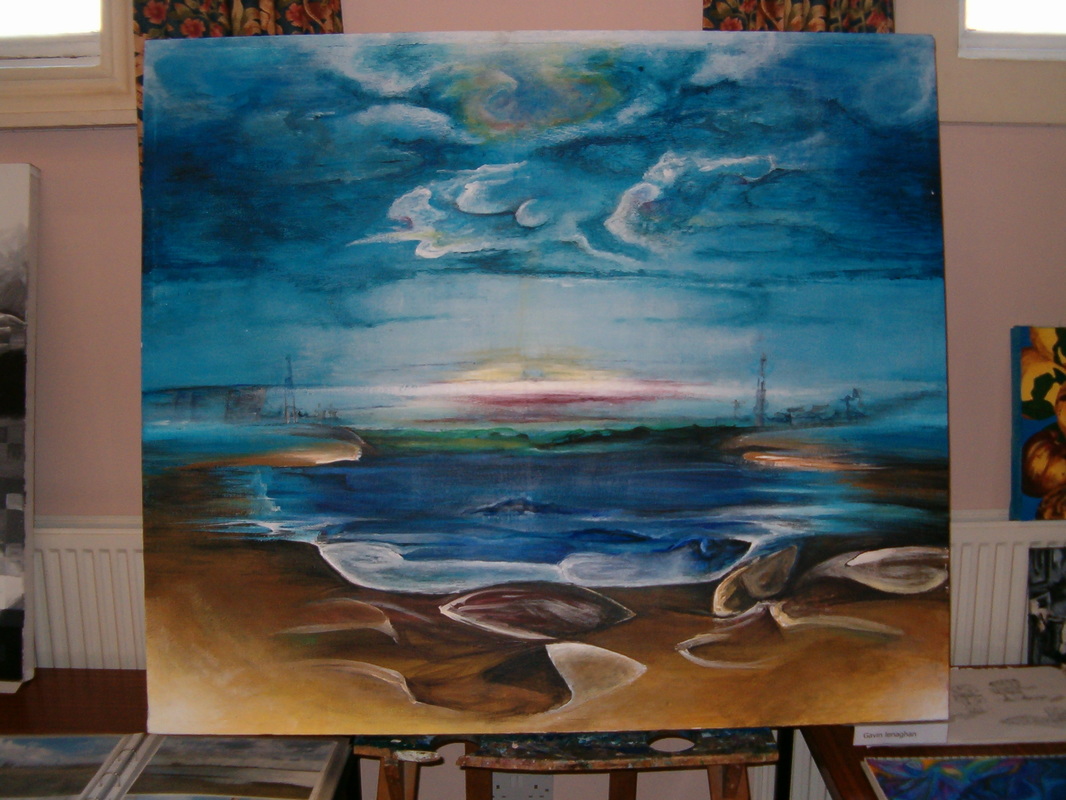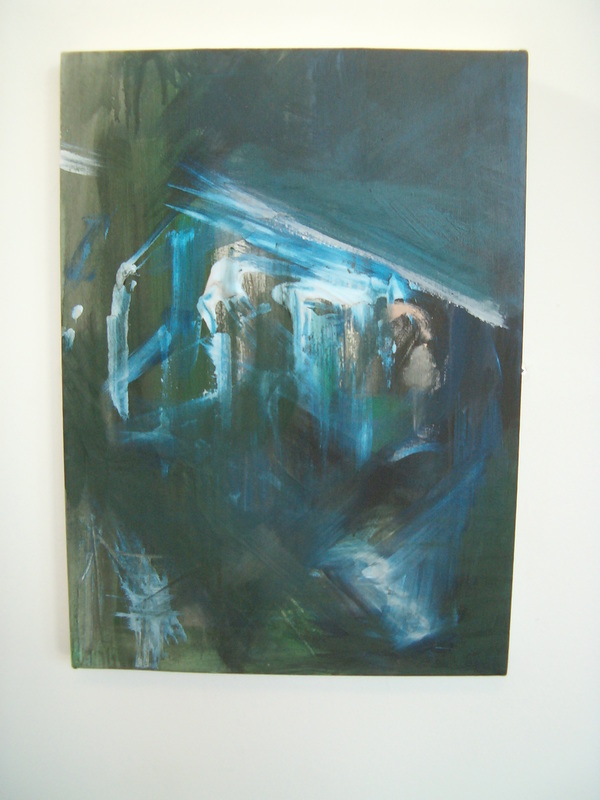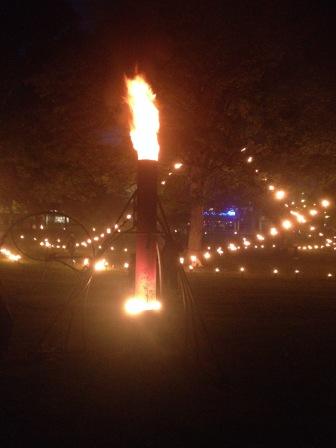The following blog post is an 'outtake' from the October issue of IN&AROUND, the free magazine distributed throughout the Chester-le-Street, Durham and Derwentside areas of England.
University art collections frequently hold unexpected treasures, and many readers of IN&AROUND will be unsurprised to read that the collection of the region's most distinguished higher education institution lives up to exactly that billing.
From 30th September until 6th November, visitors to Durham University's Oriental Museum will be given a rare glimpse of a selection of works from the university's significant collection of 20th century and 21st century prints, the existence of which will be news to even many of the North East's most ardent art lovers.
So, what can we expect as far as the actual works are concerned? That largely remains to be seen, although many of the names to have been teased - including Andy Warhol, Peter Blake, Eric Gill, Barbara Hepworth and Sandra Blow - read like a Who's Who of the story of western art over the last century.
Furthermore, with the exhibition promising to ask visitors "how the collection should be used in the future", it seems that the works won't necessarily just be left to languish back in the 'vault' once the exhibition concludes, instead potentially becoming as familiar to County Durham and North East art lovers as they surely should be.
Who are the artists that visitors will discover?
While for many IN&AROUND readers, the aforementioned names will hardly need much introduction, it's nonetheless instructive for us to remind ourselves of some of their stories.
Certainly, Hepworth and her central role in the development of modern sculpture - as well as in the post-war St Ives group of artists also including such luminaries as Ben Nicholson and Naum Gabo - will be familiar to great numbers of you, as will the still immensely ubiquitous and influential Warhol.
Eric Gill, meanwhile, emerges as a deeply contradictory and controversial figure, his much-talked about indiscretions in his personal life greatly at odds with his religious views. However, there can be little doubting his fundamentally important contribution to the fields of sculpture and typeface design, which will at least make a closer look at his printed work an interesting diversion.
We suspect that most of you will know much less about Blow, whose childhood largely spent at her grandparents' fruit farm while suffering from scarlet fever led her to spend time painting. She went on to study at Saint Martin's School of Art in the 1940s, and having died in 2006, is now remembered as a pioneering abstract artist on account of her use of collage effects and unorthodox materials such as liquid cement, chaff and charcoal.
What else can exhibition visitors expect?
There are several events connected to the exhibition, including Awesome Art!, which takes place on Saturday 8th October from 1pm to 3pm, and allows children aged 5-11 to celebrate the exhibition's opening by creating their own lino print to take home.
Meanwhile, at 1pm on Saturday 15th October, a curator's talk will explore the works on display and their backstories. You will need to book a place on this talk in advance, by calling the museum reception desk on 0191 3345691 or emailing [email protected].
The exhibition is part of the International Print Biennale, a wider North East celebration of printmaking that we have covered in more detail in the Beyond Chester-le-Street/Durham section of this issue of IN&AROUND.
Meanwhile, those of you who would like to learn more about Durham University's modern art collection may be interested to know about a guided tour of various other highlights - including printed works by Victor Pasmore, Sir Henry Moore, Hepworth and others - at the Palatine Centre on Stockton Road, Durham at 2pm on Wednesday 5th October.
This tour, Opening the Door: Art tours of the Palatine Centre, is repeated at the same time on Wednesday 12th October, and you can find out more about it by contacting [email protected].
University art collections frequently hold unexpected treasures, and many readers of IN&AROUND will be unsurprised to read that the collection of the region's most distinguished higher education institution lives up to exactly that billing.
From 30th September until 6th November, visitors to Durham University's Oriental Museum will be given a rare glimpse of a selection of works from the university's significant collection of 20th century and 21st century prints, the existence of which will be news to even many of the North East's most ardent art lovers.
So, what can we expect as far as the actual works are concerned? That largely remains to be seen, although many of the names to have been teased - including Andy Warhol, Peter Blake, Eric Gill, Barbara Hepworth and Sandra Blow - read like a Who's Who of the story of western art over the last century.
Furthermore, with the exhibition promising to ask visitors "how the collection should be used in the future", it seems that the works won't necessarily just be left to languish back in the 'vault' once the exhibition concludes, instead potentially becoming as familiar to County Durham and North East art lovers as they surely should be.
Who are the artists that visitors will discover?
While for many IN&AROUND readers, the aforementioned names will hardly need much introduction, it's nonetheless instructive for us to remind ourselves of some of their stories.
Certainly, Hepworth and her central role in the development of modern sculpture - as well as in the post-war St Ives group of artists also including such luminaries as Ben Nicholson and Naum Gabo - will be familiar to great numbers of you, as will the still immensely ubiquitous and influential Warhol.
Eric Gill, meanwhile, emerges as a deeply contradictory and controversial figure, his much-talked about indiscretions in his personal life greatly at odds with his religious views. However, there can be little doubting his fundamentally important contribution to the fields of sculpture and typeface design, which will at least make a closer look at his printed work an interesting diversion.
We suspect that most of you will know much less about Blow, whose childhood largely spent at her grandparents' fruit farm while suffering from scarlet fever led her to spend time painting. She went on to study at Saint Martin's School of Art in the 1940s, and having died in 2006, is now remembered as a pioneering abstract artist on account of her use of collage effects and unorthodox materials such as liquid cement, chaff and charcoal.
What else can exhibition visitors expect?
There are several events connected to the exhibition, including Awesome Art!, which takes place on Saturday 8th October from 1pm to 3pm, and allows children aged 5-11 to celebrate the exhibition's opening by creating their own lino print to take home.
Meanwhile, at 1pm on Saturday 15th October, a curator's talk will explore the works on display and their backstories. You will need to book a place on this talk in advance, by calling the museum reception desk on 0191 3345691 or emailing [email protected].
The exhibition is part of the International Print Biennale, a wider North East celebration of printmaking that we have covered in more detail in the Beyond Chester-le-Street/Durham section of this issue of IN&AROUND.
Meanwhile, those of you who would like to learn more about Durham University's modern art collection may be interested to know about a guided tour of various other highlights - including printed works by Victor Pasmore, Sir Henry Moore, Hepworth and others - at the Palatine Centre on Stockton Road, Durham at 2pm on Wednesday 5th October.
This tour, Opening the Door: Art tours of the Palatine Centre, is repeated at the same time on Wednesday 12th October, and you can find out more about it by contacting [email protected].



 RSS Feed
RSS Feed
